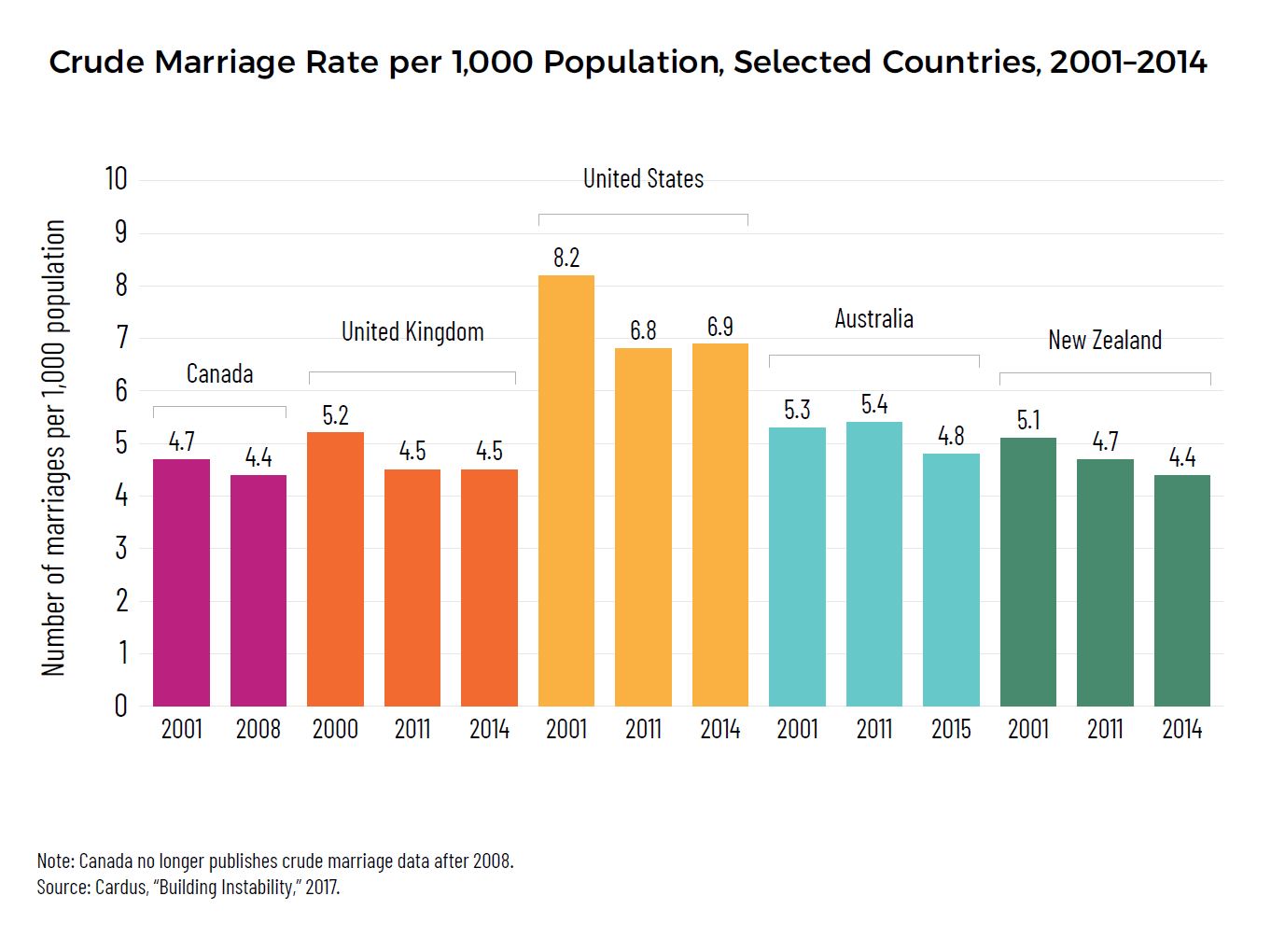Updated August 2022
Healthy marriages contribute to stable families and vibrant communities. Economic and cultural shifts have made it more difficult to enter and sustain healthy marriages. Reliable data can help us better understand changes in Canadian family life and inform the questions we need to pursue in supporting families in the years ahead.
The Canadian Marriage Map compiles data on marriage in one convenient place, highlighting current trends at the national and provincial/territorial levels. The project provides historical context and regional and international comparisons to help better understand marriage within Canadian family life.
Marriage and Family Structure
Family structure in Canada has been shifting for decades. While married families remain the majority of all census families, the portion of married families has decreased, while common-law and lone-parent families have increased.
Same-sex marriage was legalized federally in 2005, and the 2006 census was the first to capture data on married same-sex couples. With the latest census in 2021, we now have fifteen years of census data on same-sex marriages in Canada.
Marriage and Divorce
National marriage and divorce rates are derived from vital statistics. The collection and publication of national data ceased in 2011. In 2022, Statistics Canada returned to publishing divorce-rate data. There are a number of measures that social scientists use to estimate rates of divorce. Below are the number of marriages and divorces over time, and the crude marriage and divorce rates (number per 1,000 population).
Common-law couples account for 19 percent of all census families in Canada or 23 percent of all couples. About 43 percent of all couples living common-law in Canada reside in Quebec.
Some common-law partnerships are a prelude to marriage, while others are an alternative to marriage. Common-law relationships are more prone to dissolution compared to marriage, and couples have varying legal rights from region to region across Canada.
Marital Status and Children's Living Arrangements
Marriage is linked to positive outcomes for children. The following graphs examine the presence of children in couple families, and the prevalence of children in various family structures across the country and over time.
Parenting without a partner can present many challenges. Although lone parents are overrepresented among lone-income families, Canadian policies have made significant strides in helping lone-parent families over the last several decades.
Household Size
Household size has decreased as the portion of married Canadians has decreased. Statistics Canada reports that in 2006 unmarried Canadians living in private households outnumbered married Canadians for the first time. The following graphs show the growth in one-person households as the size of family households decreased.
Marital Status and Income
In Canada as in the United Kingdom and United States, marriage is associated with a growing income divide. Wealthier families are more likely to be married. Economic and cultural forces have contributed to the decline of marriage among lower-income Canadians.
Increasing labour-force participation among women over the last few decades has resulted in changes in the portion of household income that each partner receives.
Attitudes on Marriage
Attitudes toward marriage are an important cultural indicator. While most Canadians remain positive about marriage and the level of commitment it signifies, they are less likely to consider marriage as a necessary part of family life.

